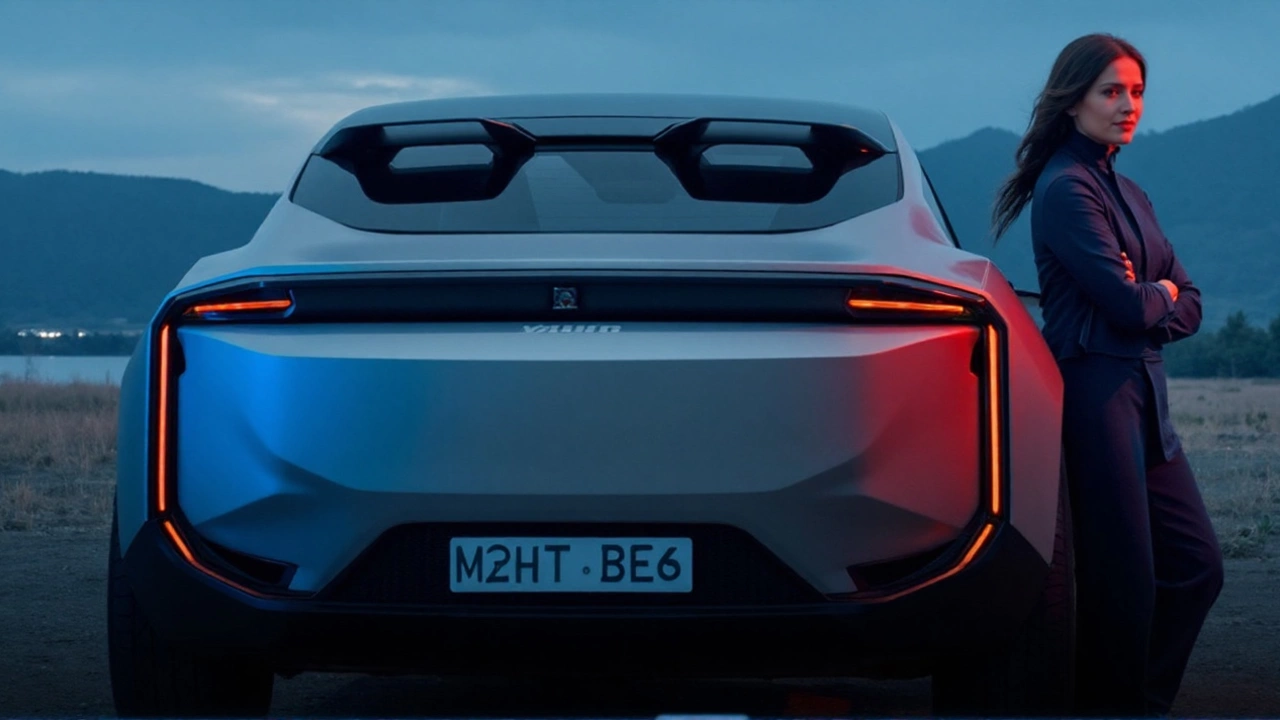Mahindra moves early as GST revamp resets car prices
Sticker prices on several Mahindra SUVs just dropped. The company has cut ex-showroom prices by as much as Rs 1.56 lakh, passing on the full benefit of India’s reworked GST structure. The new tags went live on September 6, days after the 56th GST Council approved a simpler two-slab regime—18% for small cars and a flat 40% for larger vehicles—on September 3.
What stands out is the timing. The industry had a few weeks to prepare, with the revised rates officially kicking in on September 22. Mahindra didn’t wait. It updated prices across dealerships and online, telling customers they’ll see the benefit right away on fresh invoices.
This shift is more than a discount season. It’s a tax reset. For years, buyers juggled a 28% GST plus a varying compensation cess driven by size, engine, and body type. The new structure strips away that maze. Smaller vehicles drop to 18%, while bigger ones line up at an all-in 40%—simple to understand, easier to price.
Mahindra says more than 60% of its volumes—including commercial models—now sit in the lower 18% slab. That tilts savings toward mass-market buyers and fleets, the two segments that move the most metal month after month.

Who saves how much, and what it means for your on-road price
Here’s how the cuts stack up across Mahindra’s showroom. Reductions vary by fuel type and drivetrain, and exact benefits can differ by trim and city, but these headline figures give a clear picture:
- XUV 3XO (diesel): up to Rs 1.56 lakh lower
- XUV 3XO (petrol): up to Rs 1.40 lakh lower
- Bolero and Bolero Neo: up to Rs 1.27 lakh lower
- Thar 2WD (diesel): up to Rs 1.35 lakh lower
- Thar 4WD (diesel): up to Rs 1.01 lakh lower
- Thar Roxx: up to Rs 1.33 lakh lower
- Scorpio-N: up to Rs 1.45 lakh lower
- Scorpio Classic: up to Rs 1.01 lakh lower
- XUV700: up to Rs 1.43 lakh lower
The impact is bigger than an ex-showroom cut. On-road price includes road tax and insurance, both linked to the ex-showroom value. When ex-showroom drops, road tax falls too. Insurance premiums (which are tied to Insured Declared Value) also nudge down. Example: if your SUV’s ex-showroom falls by Rs 1.5 lakh, your total on-road saving can stretch beyond that once you factor in lower tax and a slightly lower premium. If you’re financing, a rough rule: every Rs 1 lakh reduction trims a 5-year EMI by about Rs 2,100 at around 10% interest. So a Rs 1.5 lakh cut can lower your monthly outgo by roughly Rs 3,100—useful for buyers balancing EMIs and household budgets.
It also changes upgrade math. A buyer considering a compact SUV may now reach a higher trim or a bigger engine without busting the budget. For fleet operators, lower upfront cost improves payback periods, especially on high-mileage routes where fuel and maintenance already dominate operating costs.
Mahindra has pushed the updates to all dealers and its digital channels. If you have a booking in the system but your invoice isn’t issued yet, the revised price should apply at billing. Always ask your dealer for a fresh proforma with the updated GST rate and break-up so there’s no confusion.
The wider market is moving too. Tata Motors has cut prices by up to Rs 1.45 lakh. Entry models like the Tiago and Tigor are down by roughly Rs 75,000 and Rs 80,000, the Altroz by about Rs 1.10 lakh, while bigger SUVs such as the Harrier and Safari are lower by about Rs 1.4 lakh and Rs 1.45 lakh. Toyota, Renault, Hyundai, Škoda, Audi, Mercedes, BMW, and Maruti have also announced reductions, setting up a broad reset just ahead of the festive rush.
Why does the new GST structure matter so much? Earlier, taxes on larger SUVs were a mix-and-match: a base GST plus a compensation cess that depended on size and specs. Now, the signal is clear—two slabs, two outcomes. Small cars step down to 18%, which is a clear relief for entry and mid-range buyers. Bigger, pricier vehicles sit at a flat 40%. The split sharply reduces confusion around variant pricing and gives manufacturers room to plan trims and features without tripping tax thresholds.
There are still two moving parts to track. One, the final notification clarifying definitions around "small" versus "larger" vehicles under the revised system is tied to the September 22 effective date. Two, some states compute road tax differently, so the on-road benefit can vary. Your dealer’s break-up should reflect local road tax rules, handling charges, and insurance choices.
Expect demand to bunch up in the weeks ahead. Buyers who were sitting on the fence now have a clear incentive to advance purchases into the festive window. High-demand models like the Scorpio-N and Thar could see longer queues if footfalls spike. On the flip side, the broader price reset might ease the decision for buyers who were torn between trims or between petrol and diesel.
There’s also a ripple effect in the used market. When new-car prices fall, near-new used prices often adjust. Don’t be surprised if lightly used examples of models with the steepest cuts, like the XUV 3XO diesel or Scorpio-N, see sellers recalibrate asking prices. Dealers may also revise exchange valuations in line with the new ex-showroom benchmarks.
If you’re planning to buy this month, here’s a quick checklist to keep it simple:
- Ask for a revised ex-showroom price sheet that reflects the GST change and the exact variant you want.
- Confirm the on-road break-up: road tax, insurance, handling, accessories, and any add-ons. Check how much each line item fell versus the old quote.
- If you’ve pre-booked, get written confirmation that the revised price applies on invoice date. Price protection policies vary by brand and dealer.
- Compare finance options again. With a lower on-road price, you might reduce tenure, drop EMI, or upgrade trim for a small EMI bump.
- Verify delivery timelines. Popular variants may see fresh demand; an early slot can save you a festival-season wait.
For Mahindra, the spotlight models are clear. The XUV 3XO becomes an even sharper value play in the compact SUV bracket, especially in diesel where the cut is the deepest. The Thar range remains a lifestyle favorite, and the lower entry price for the 2WD diesel expands its appeal beyond pure off-roaders. The Scorpio-N’s reduction lands right in the heart of the midsize SUV fight, where buyers sweat every thousand on EMI. And the XUV700’s cut makes its higher-spec ADAS and powertrains more accessible to families moving up from compact SUVs.
Commercial buyers stand to gain too. With a large chunk of Mahindra’s volumes now under the 18% slab, fleet operators and small businesses can roll in fresh capacity at a lower upfront cost. That’s timely for logistics and last-mile players gearing up for festive freight peaks.
The competitive response will likely intensify. Tata’s quick moves show no one wants to leave value on the table in September. Maruti and Hyundai—big players in the small-car space that benefits most from 18%—have strong reasons to streamline pricing and push volume. Premium brands cutting tags ahead of the official effective date also points to a coordinated industry reset rather than a slow, model-by-model drift.
Bottom line for buyers: the numbers are finally simple, and the savings are real. If your short list includes Mahindra models, the Mahindra price cut makes higher trims and safer variants easier to reach. Just get a clear quote, double-check the tax and insurance break-up, and lock a delivery window that works for you.

